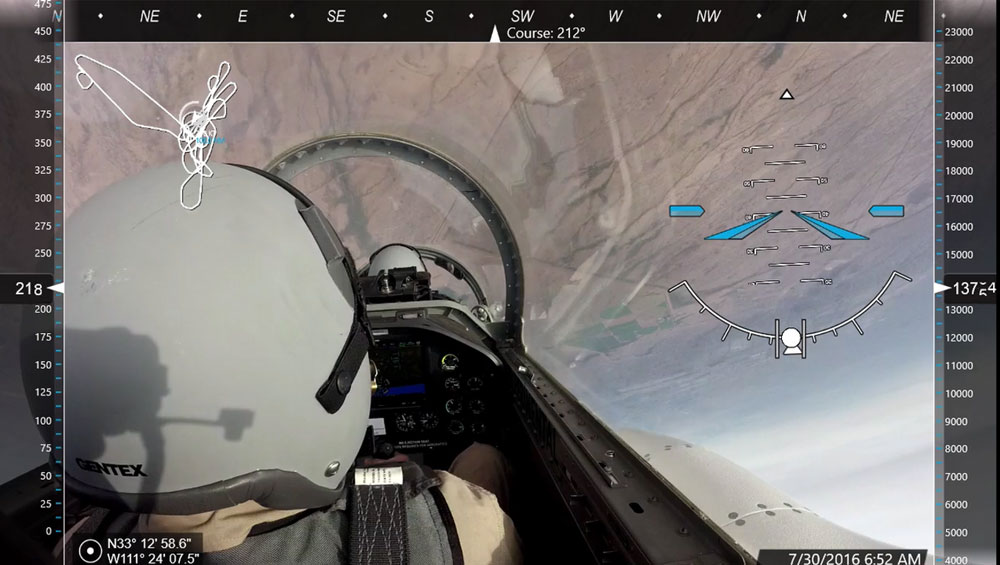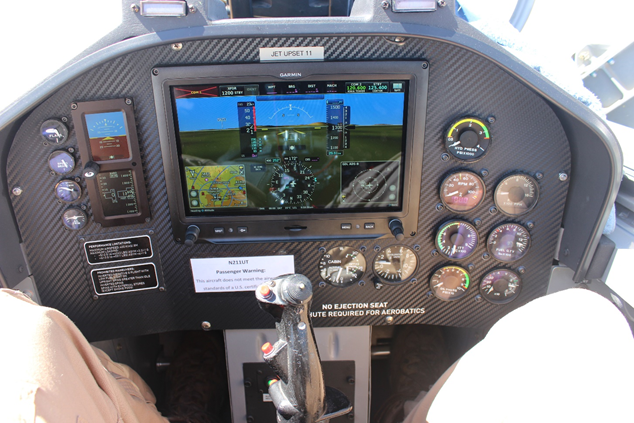UPRT Aircraft Requirements and SIAI-Marchetti S211 Capabilities

This description of the SIAI-Marchetti S211 jet trainer is provided in two installments. This initial discussion will center on generic consideration for a jet upset prevention and recovery training (UPRT) aircraft platform and how the S211 meets those needs. The second installment discusses how specific features of the S211 are utilized in the S211 to enhance its role as a jet UPRT aircraft.
Aviation Performance Solutions has had the pleasure of flying the SIAI-Marchetti S211 jet trainer in the delivery of Upset Prevention and Recovery Training for a diversity of jet pilots. Customer reception of the S211 was so positive that APS acquired a second S211 within just a few months of operations. Before we discuss the advantages of the S211, it is important to identify the most important features of any effective UPRT platform.
What is important in a UPRT platform?
First, to fully expose a pilot to the entire attitude and performance envelope of an aircraft, a fully aerobatic aircraft is required. The ability to fly into, and recover from, the full 360-degree range of roll and pitch; the ability to do full stalls; and the ability to encounter relevant upset situations for realism is ideal. Given these training scenarios, margin of safety is critical and must never be overlooked. There is always a risk of a stall becoming a spin or a pilot over-controlling the aircraft resulting in high positive or negative G-loadings. While upset recoveries should be trained to G-loadings representative of the pilot in training’s aircraft (e.g. 0-2.5 G’s for a typical transport category aircraft), there is always risk of exceeding these limits in the training environment. Furthermore, the ability to emulate aerodynamic characteristics encountered in “real-world” upset events such as swept wing stalls and at high altitude is important.

How Does the APS S211 Stack Up Against Other UPRT On-Aircraft Platforms?
The SIAI Marchetti S211 jet trainer is a pressurized, 6000-pound tandem seat aircraft with simple, robust flight controls. It operates at altitudes up to 40,000 feet and speeds up to 400 KIAS or .8 Mach. It is capable of structural loads of +5/-2 G (+6/-3 G below 5500 pounds). Although not part of the S211 UPRT program, the S211 is fully recoverable from developed spins, ensuring an enhanced margin-of-safety for advanced full stall training.
APS has retrofitted it’s S211 trainers with the latest Garmin G3X large touchscreen avionics display to closely represent the corporate business jet or airline flight deck. The S211 is powered by a Pratt and Whitney JT15D engine with 2,500 pound thrust (and with inverted oil system) allowing for low cost operations to the benefit of our customers’ budget sensitivity. Our team has demonstrated that our S211 aircraft can deliver all APS UPRT programs and flight profiles just as effectively and comprehensively as our fleet of Extra 300L aerobatic propeller aircraft. In fact, all standard (low) APS UPRT profiles can be done in the S211 in VFR airspace between 10,000 feet MSL and below Class A airspace where the 250kt airspeed limitation is not applicable. One of the important features of the APS S211 is its ability to also perform high-altitude UPRT in ATC-governed airspace.

S211 Avionics: The S211 Rear Cockpit occupied by our customers has the following avionics and instrumentation to enhance the UPRT environment: central large screen Garmin G3X Primary Flight Display (PFD); vertically oriented airspeed and altitude tapes with vertical speed indications; compass card with G-meter overlay (figure 4) triggered by pitch, bank and G parameters; standby Mid-Continent solid-state attitude reference; speedbrake, configuration and trim position indications; engine instrumentation, etc. The customer has full control of throttle, speedbrake and pitch trim. APS adopts the CRM practice of the Pilot Flying (PF) customer calling for gear and flap selections.
High Altitude Training in the S211: The high-altitude environment is defined as flight above FL 250. APS conducts valuable UPRT profiles in the S211 between FL250 and FL330, effectively training high altitude aerodynamics, swept wing stalls and upset prevention and recovery strategies. These maneuver and scenario-based exercises are performed effectively and comprehensively to include: thrust-limited and airspeed stagnation/slowdown situations below L/D max airspeed; reduced aerodynamic damping, increasing control sensitivity, and reduced operating margins; associated increased lateral instability and greater altitude loss in recoveries due to limited thrust and thinner air; earlier stall buffet onset due to reduced stall angle of attack at high Mach, increased indicated stall speed at high altitude; decreased aircraft stability necessitating smooth, proportional control inputs.

Human Factors – Live Jet Upsets vs. Simulator Training: Although simulator training is indeed valuable as firmly espoused by APS, completing comprehensive on-aircraft UPRT training is critical at some point in a pilot’s career–preferably earlier than later with recurrent training every 3 to 5 years. A pilot who is afraid to be overbanked in his or her aircraft will also experience a similar degree of startle and shock when encountering inverted attitudes even in a fully qualified, safe, and aerobatic capable UPRT aircraft platform. That pilot will not, however, be nearly as apprehensive of the same environment in a simulator, if apprehensive at all. Simulators lack the “reality factor,” fear of dire consequences, and sense of urgency. Due to the incapacitating nature of the real-world airplane upset psychophysiological condition of the pilot, conducting on-aircraft training as early as possible is essential to a pilot developing the mental discipline and technical skills to overcome fear and panic, to react effectively in the face of startle and surprise events, and to learn to think clearly while applying recovery principles in an actual aircraft.
While all on-aircraft UPRT training platforms can be effective in this regime, an increased benefit of the S211 as a jet upset trainer are the higher speeds, reduced turn rates, larger turn radii, increased accelerations, and additional complexity of aircraft systems emulating a corporate jet aircraft. Together, these conditions dramatically magnify both the “reality” and “startle/surprise” factors, illustrating to pilots the stress level and sense of urgency they will face during an actual upset event.




Comments: